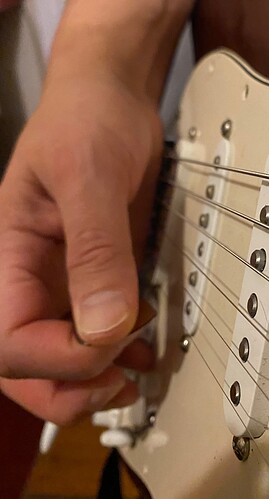I think really you have to decide whether it’s worth it, or if it’s just a fools errand in the long run. Meaning what’s really more important to you. Playing the riff as cleanly and fast as you want and being to make music from it as soon as possible, or mastering the particular technique of being able to alternate pick arpeggios across multiple strings like that.
At this point in my playing I tend to view things transactional from a profit/loss perspective. Do I want to fumble around for another 1-2yrs perfecting a hard technique just to say I can do it, or do I want to play the damn thing to make music out of it? I ask myself what the benefits of both are, and if taking that time, however long it may be, is worth it in the long run, and will I get all the use out it all my hard work and time bought? Do the ends justify the means?
All of that said. Here are the biggest points of hardness in playing phrases like that. The biggest is that you have a huge multiple string jump that you have to do after the third note to restart the pattern again. This isn’t the same as just cross picking an arpeggio up and down the triad stack. This is quite a bit more difficult because it requires a huge jump from the last to first note in order to restart the pattern again, and not only that, if you are set on strict alternate picking, you are alternating between starting in an up and down every other time, which is another thing you have to keep track of. After playing around with your lick a little last night night, There are two ways to attack this, and really depends on wether you use pick slanting at all in your natural playing. The first way, is that you have to rotate your slant between a downward one and an upward one on every down beat of the triplet. If you look at Toms video, this is what he’s doing in that arpeggios example, although he is just playing an arpeggios up and down and not doing any drastic jump between low and high notes. The second way is to hold your pick in a trapped neutral position and work on a more shallow scoop double escape, which may be more conducive to how you actually play. But again keep in mind which ever you do is going to take time and be hard because of the larger string jump you have between the first and last note to restart the pattern. It’s the constant tracking of the strings and where you are in the pattern that’s going to be the killer because you have to put more conscious effort into this aspect, than just letting your hands take control.




